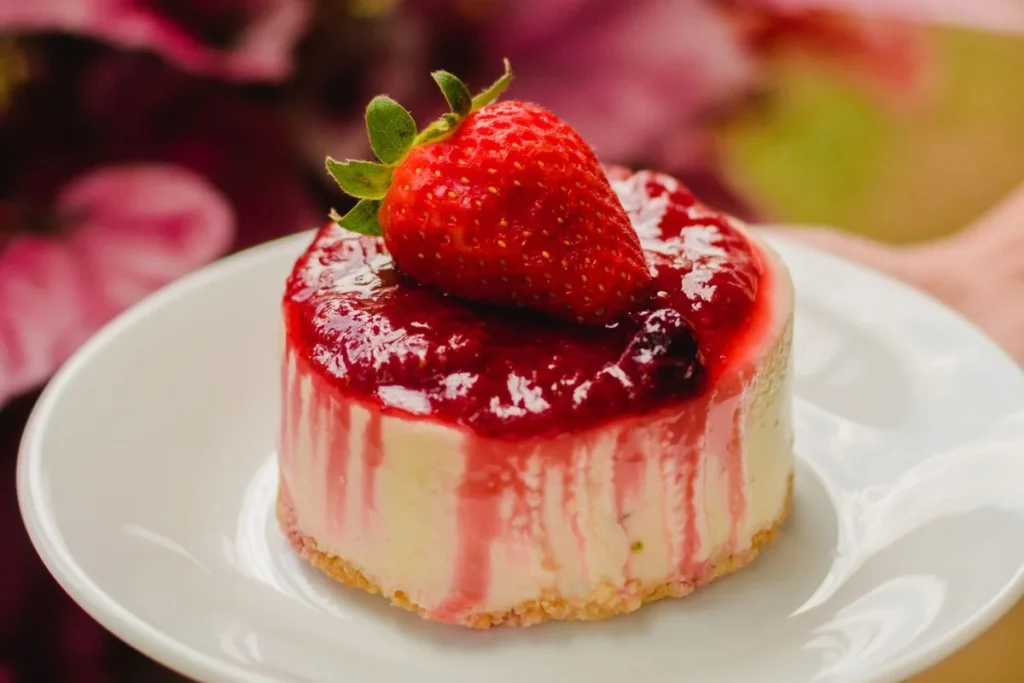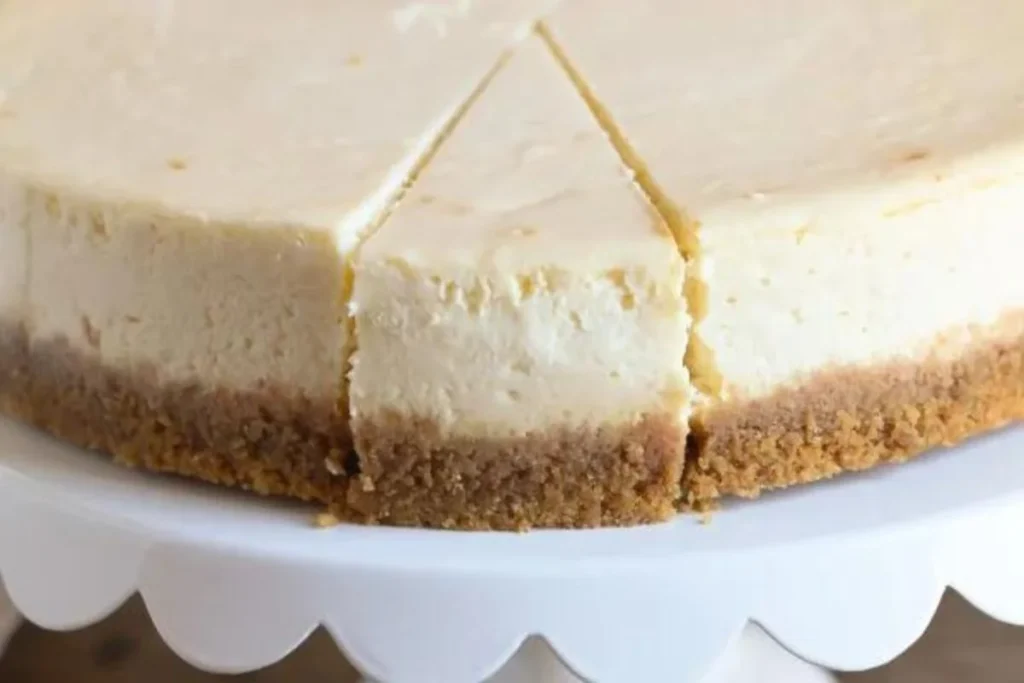4 Easy Ways to Get Cheesecake Out of Silicone Mould
Baking a delicious cheesecake is super fun, but the tough part is often when you need to take it out of the mold without messing up its perfect look. If you’ve ever had trouble getting your cheesecake out of a silicone mould, don’t stress!
In this blog post, we’ll check out five simple and guaranteed ways to make sure your cheesecake comes out smoothly, keeping it looking irresistible. Whether you’re new to baking or a seasoned pro, these tricks will make it easy-peasy.
Table of Contents
ToggleThe Challenges of Removing the Cheesecake from a Silicone Mould
Taking a cheesecake out of a silicone mould might seem easy, but it comes with its own set of challenges. Cheesecake is pretty delicate, so it can easily get stuck in the mold. Dealing with this requires some patience, careful handling, and knowing the right tricks.
One big issue is that the cheesecake can stick to the silicone, especially in any fancy designs or grooves in the mold. Even if you’ve chilled it properly, it might still tear or crack when you try to take it out. This problem gets worse if you haven’t chilled it long enough because a softer cheesecake is more likely to break.
Also, while silicone moulds are great for baking because they’re flexible, they can make it tricky to get the cheesecake out. Sometimes, instead of popping right out, the mold clings to the cheesecake, making it hard to separate them.
Things get even tougher if you’re using a mold with fancy patterns or shapes. These designs make the cheesecake look amazing, but they also give it more places to stick. Regular methods might not work here, so you might need some special tricks to get the cheesecake out in one piece.
Time matters a lot too. In today’s fast-paced world, waiting for the cheesecake to chill properly in the fridge might feel like forever. But rushing it is a bad idea because an under-set cheesecake is more likely to stick to the silicone, ruining your presentation.

How to Get Cheesecake Out of Silicone Mould in 4 Easy Methods
Silicone moulds are great because they’re flexible and don’t stick, but getting your cheesecake out without it falling apart takes some skill.
In this section, we’ll look at four simple ways to make sure your cheesecake comes out smoothly from a silicone mould, keeping it looking delicious.
1. The Freezer Method
One effective method to ease the cheesecake removal process is the freezer technique. After your cheesecake has completed its chilling time in the refrigerator, transfer it to the freezer for an additional 1-2 hours. The cold temperature will solidify the cheesecake, making it less likely to stick to the silicone mould.
Once the cheesecake is adequately frozen, take it out of the freezer and let it sit at room temperature for about 10-15 minutes. This brief thawing period will prevent any cracks or damage to the delicate surface when you’re ready to remove it from the silicone mold.
Gently press on the silicone mould to release any air suction and carefully peel it away from the cheesecake. If needed, you can use a thin, flexible spatula to help lift the edges. This method is particularly effective for intricate molds with detailed designs.
2. Hot Water Bath Technique
Another effective strategy to release your cheesecake from a silicone mould involves the use of a hot water bath. Boil a pot of water and carefully pour it into a large, shallow pan. Place your silicone mould with the cheesecake inside the pan, ensuring that no water seeps into the mold.
Let the mold sit in the hot water bath for about 30 seconds to 1 minute, allowing the heat to gently loosen the edges of the cheesecake. Be cautious not to overdo it, as excessive heat can cause the cheesecake to melt or lose its shape.
After the brief bath, use a kitchen towel to dry the exterior of the silicone mould. Press down on the edges of the cheesecake with gentle, even pressure, and then invert the mold onto a serving plate. The heat and slight contraction of the silicone will make the cheesecake slide out effortlessly.

3. Parchment Paper Lining
Preventing sticking is half the battle when it comes to unmolding cheesecake. To achieve this, consider lining your silicone mould with parchment paper before pouring it into the batter. This simple yet effective step creates a barrier between the cheesecake and the mold, making the release process much smoother.
To line your silicone mould, cut a piece of parchment paper to fit the bottom and sides. Make sure to leave a slight overhang on the sides for easy lifting. Grease the mold lightly with butter or cooking spray before placing the parchment paper inside.
Once your cheesecake has set and chilled, use the parchment paper overhang to lift the dessert out of the mould. This method is especially useful for molds with intricate designs or those with nooks and crannies that may trap the cheesecake.
4. Warm Towel Method
If you prefer a gentler approach, the warm towel method is an excellent choice for releasing cheesecakes from silicone moulds. Begin by soaking a kitchen towel in hot water, ensuring it’s wrung out to avoid excessive moisture.
Wrap the warm towel around the silicone mould, making sure it covers all sides. Allow it to sit for 5-10 minutes, allowing the heat to soften the surface of the cheesecake and the silicone mold.
After the brief warming period, gently press on the edges of the cheesecake, feeling for any areas that may still be sticking. If needed, use a spatula to carefully loosen the edges before inverting the mold onto a serving plate. The warm towel method is particularly effective for larger cheesecakes or those with a creamier texture.

Common Mistakes to Avoid When Removing the Cheesecake from a Silicone Mould
To ensure a smooth and stress-free removal process, it’s crucial to be aware of common mistakes that can occur and take preventive measures. Here are some key blunders to avoid:
- Insufficient Greasing: One of the primary mistakes is not greasing the silicone mould adequately. Inadequate greasing can lead to the cheesecake sticking to the mould, making the extraction process challenging. Ensure thorough coverage with high-quality grease to create a protective barrier.
- Using the Wrong Grease: Selecting the wrong type of grease is another pitfall. Not all greases are suitable for silicone moulds. Opt for a grease specifically designed for baking and silicone surfaces to prevent compatibility issues and ensure easy release.
- Skipping the Freezing Step: Neglecting to freeze the cheesecake before attempting removal is a common oversight. Freezing solidifies the cake, reducing its adhesion to the mould. Skipping this step may result in the cheesecake breaking or sticking, causing frustration.
- Rushing the Process: Patience is key when dealing with delicate desserts like cheesecakes. Rushing the removal process can lead to tearing or deformation of the cake. Take your time, follow the recommended steps, and allow the cake to release naturally.
- Using Sharp Objects: Resorting to sharp knives or utensils to pry the cheesecake from the mould is a mistake that can damage both the cake and the silicone surface. Avoid using sharp objects that may cause cuts or scratches.
- Not Checking for Doneness: Removing the cheesecake from the oven before it’s fully cooked is a recipe for disaster. Ensure the cake is thoroughly baked before attempting removal to prevent it from sticking or falling apart.
- Neglecting Mould Maintenance: Overlooking the proper cleaning and maintenance of your silicone mould can impact its non-stick properties. Regularly clean the mould according to the manufacturer’s instructions to ensure optimal performance.
How Do You Keep Cheesecake From Sticking to Silicone Molds?
Preventing cheesecake from sticking to silicone molds is super important if you want your dessert to look perfect. Sometimes it can be tricky to get it out of the mold without it sticking, but there are some tricks you can try to make it easier.
One good trick is to line your silicone mold with parchment paper. Cut a piece of parchment paper to fit the bottom and sides of the mold, with a little extra hanging over the edges. This creates a barrier between the cheesecake and the silicone, so it’s less likely to stick.
You can also lightly grease the mold with butter or cooking spray before putting in the parchment paper to make sure it comes out even smoother.
Another important thing is to chill your cheesecake properly. Let it sit in the fridge for the time your recipe recommends. This helps it firm up and makes it less likely to stick to the mold when you try to take it out. It might take some patience, but chilling it properly is key to getting it out smoothly.
Different molds might need different methods to get the cheesecake out without it sticking. For molds with intricate designs or patterns, using parchment paper is especially helpful because it covers every little detail and prevents sticking.
It’s also important to find the right balance between flexibility and firmness with silicone molds. They’re great because they’re flexible, but you still want your cheesecake to hold its shape. So make sure it’s well-chilled but not too stiff before you try to take it out of the mould. Finding that balance will help you get a perfect cheesecake every time.
Does Silicone Molds Need to be Greased?
Usually, you don’t need to grease silicone molds. One cool thing about them is they don’t stick much. Silicone has a smooth surface that makes it easy to pop out baked goods or whatever you’re making without needing to grease or flour the mold.
But it’s smart to check the instructions from the maker of your silicone mold just in case they have their special tips.
Frequently Asked Questions (FAQS)
How long should I freeze the cheesecake before attempting to remove it from the mold?
Aim for at least 4-6 hours of freezing time to ensure the cheesecake is adequately set.
What should I do if the cheesecake sticks to the mold despite following the recommended techniques?
If facing difficulties, gently warm the mold or use a hot water bath to help release the cheesecake.
Can I reuse silicone moulds for cheesecake, or should I buy new ones regularly?
Silicone molds are generally durable and reusable but inspect them regularly for any signs of wear or damage. Replace if needed for consistent results.
How to Get Cheesecake Out of Silicone Mould | Conclusion
Taking a cheesecake out of a silicone mold doesn’t have to be hard. With these five simple and dependable techniques, you can make sure it’s easy and show off a perfect cheesecake every time you bake.
Just remember to stay patient, stick to the recommended chilling times, and pick the method that works best for your mold and what you like. Whether you go for the freezer method, hot water bath technique, parchment paper lining, or the warm towel method, these ways will make your cheesecake baking experience even more fun. Happy baking!
Lindsey Mackenzie
About me
Hi there! I’m Lindsey Mackenzie, the founder of Bake Smartly. Baking has been my passion since childhood, growing up in my father’s bakery. With Bake Smartly, I’m excited to share my love for all things sweet and savory. Join me on this delicious journey as we whip up scrumptious treats and sprinkle joy into every bite!






